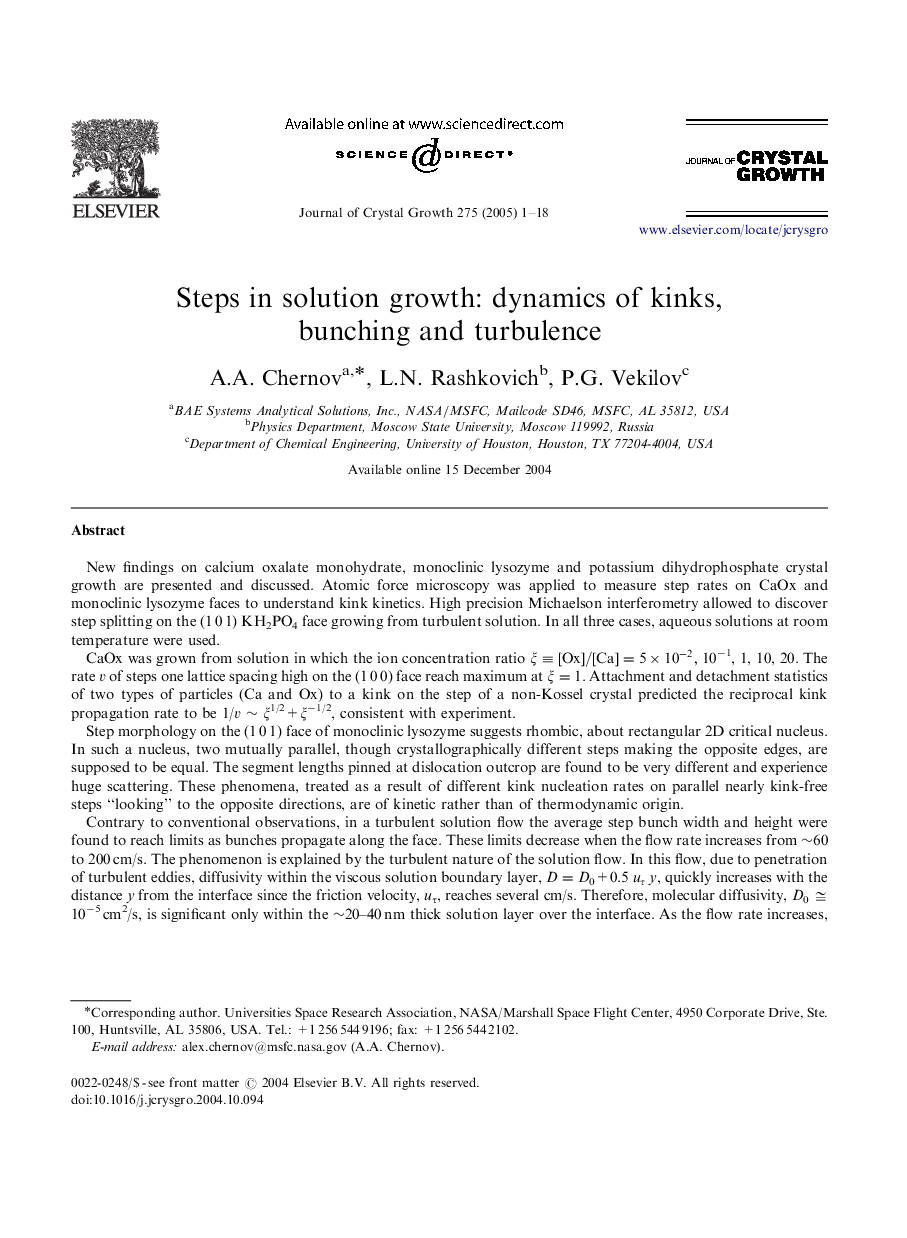| Article ID | Journal | Published Year | Pages | File Type |
|---|---|---|---|---|
| 9830117 | Journal of Crystal Growth | 2005 | 18 Pages |
Abstract
Contrary to conventional observations, in a turbulent solution flow the average step bunch width and height were found to reach limits as bunches propagate along the face. These limits decrease when the flow rate increases from â¼60 to 200Â cm/s. The phenomenon is explained by the turbulent nature of the solution flow. In this flow, due to penetration of turbulent eddies, diffusivity within the viscous solution boundary layer, D=D0+0.5 uÏ y, quickly increases with the distance y from the interface since the friction velocity, uÏ, reaches several cm/s. Therefore, molecular diffusivity, D0 â
10â5Â cm2/s, is significant only within the â¼20-40Â nm thick solution layer over the interface. As the flow rate increases, the turbulent mixed solution approaches the growing stepped crystal face closer and shrinks the range within which steps interact with one another through their diffusion fields. This weak interaction results in step splitting.
Keywords
Related Topics
Physical Sciences and Engineering
Physics and Astronomy
Condensed Matter Physics
Authors
A.A. Chernov, L.N. Rashkovich, P.G. Vekilov,
